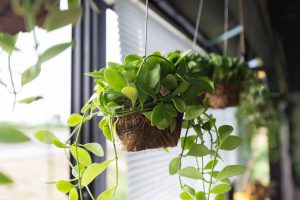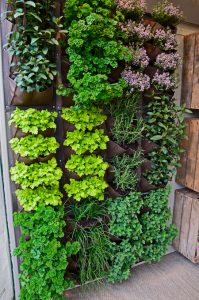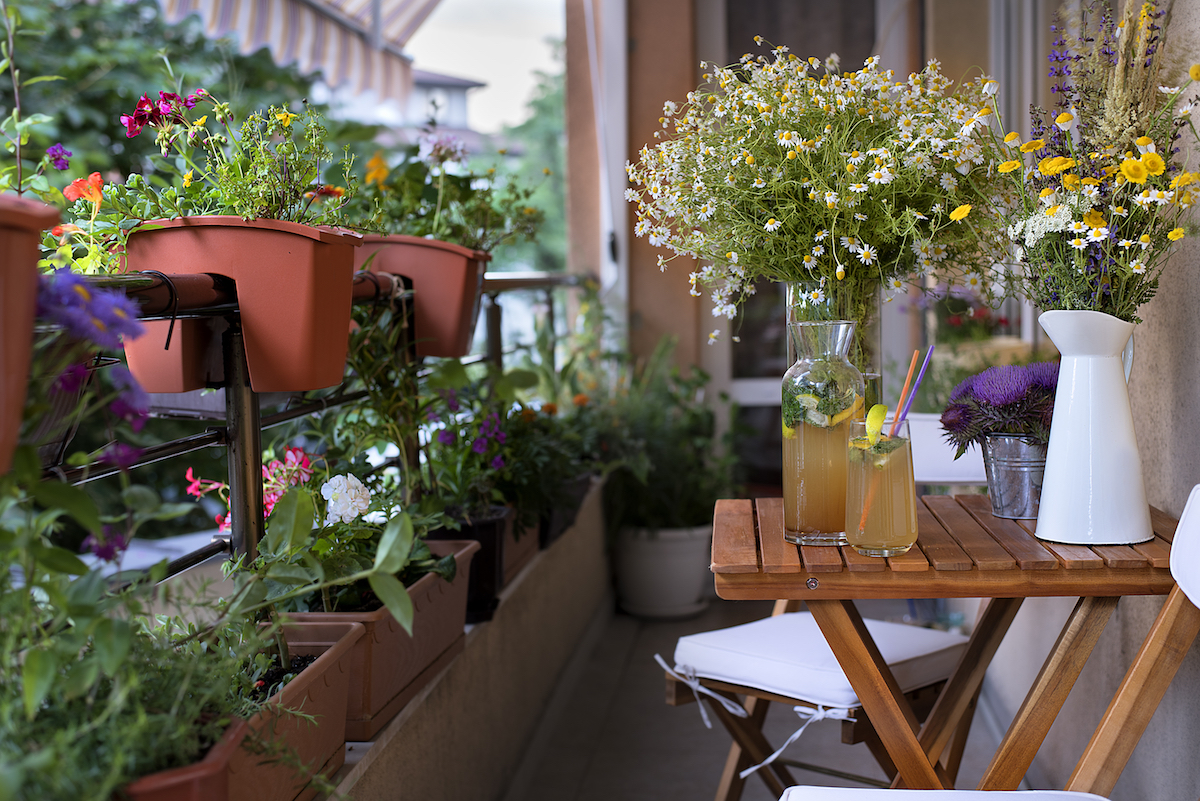
Transform tiny troves into lush gardens with tips from local horticulturists.
By Ashley Ryan
A garden—no matter how big or small—holds a certain kind of magic. Whether you’re dealing with potted plants and colorful flowers or fragrant herbs and verdant vegetables, there’s something poetic about nurturing greenery and watching it grow.
But, here in Laguna Beach, space can be limited. Cottage-style homes seemingly have it all: a chic exterior, a cozy interior and, sometimes, even a killer view. But the backyard and patio space is often cramped, leaving homeowners to think up creative ways to bring a garden oasis to life.
And, as many have been homebound more than usual during the pandemic, it’s only natural that the ideas would start swirling. “When people spend more time at home, they spend more time in their gardens—or wishing they had a garden and setting about to make that a reality,” notes Nancy Englund, longtime board member and former president of the Laguna Beach Garden Club.
Last summer, ScottsMiracle-Gro, a company that manufactures lawn and garden products, released a survey stating that more than half of American adults were gardening or caring for their yard, with 22% starting after the lockdown was put in place. While some were doing it to stay busy, get outdoors or feel a sense of accomplishment, many were looking for fresh food alternatives.
“Any space with sunlight and water can become a garden,” Englund adds. “Stick a chair there and be soothed and amazed by how many birds and butterflies visit.”
No matter what your individual reason is, starting a garden of your own definitely has its pros. Read on to discover how local experts suggest working with small spaces to create lush landscapes.
Working with Limitations
Whenever you’re working with limited space, it’s important to observe the area, determine what you have room for and create a plan.
Englund says you’ll want to “go big”—even if the area itself isn’t. “Big plants in big pots make a small space look bigger,” she explains. “A clutter of small pots can look cramped and crowded. … Every pot can be a garden with thrillers, spillers and fillers.” However, she recommends sticking with soft, fragrant options over spiny ones.
Another way to make the garden appear bigger than it is involves top dressing the potted plants for a more finished look. Do this using things like rocks, marbles or moss, but make sure the hues complement the space. “If you match the color of the top dressing to what the pot is sitting on, it visually expands the space,” Englund notes.
Those looking to create a garden oasis may also opt to create a central idea around which to organize the greenery. For example, Englund herself has a Fifty Shades of Green area, a mermaid garden and an expanse dedicated to ground cover plants called Maizy’s Meadow, named after her late dog, who enjoyed rolling in the mint there. “Shopping at a nursery gives me far greater pleasure than any mall. I love seeing what’s new and trying to figure out where I will fit it in my overcrowded garden,” she explains. “Having themes helps me focus and eliminate temptation.”
According to Gene Sottosanto, aka “Green Gene,” a Laguna-based landscaper that focuses on eco-friendly gardening, small spaces can still hold varied options as far as placement goes. He suggests incorporating things like tower gardens, rack gardens or hanging baskets, or guiding plants up a wall, over a banister or even on a ledge or windowsill.
Sottosanto agrees that bigger pots are the way to go, but he offers a trick for keeping smaller vessels healthy: “It is true that bigger containers are easier to care for, but if smaller containers are completely submerged in water before being placed inside the big containers—to slowly water them over time—it will be better.” He adds that keeping the soil covered can also hold in moisture.
No matter the size of the garden, Sottosanto notes that gardening can be therapeutic in a number of ways, helping to ground you while also offering a chance to be creative and also providing hope in a time when so many need it. “It is orderliness—putting stuff where it belongs to enhance the value of space, light and … resources to promote biodiversity in harmony and balance,” he says. “When we do the right thing, beauty happens.”
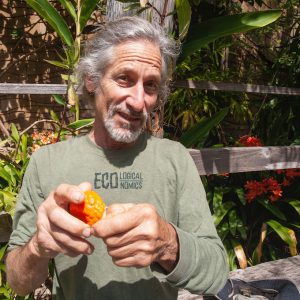
Cultivating Crops
Visit a nursery and you’ll likely be overwhelmed at where to begin. But Englund and Sottosanto agree that plants that can be used for food are often a good place to start. “Fresh food and a connection to the earth have immense benefits,” Englund notes.
For Sottosanto, the process of growing food is not only one that connects us to nature, but also one that offers survival knowledge, is less destructive to the planet and keeps us healthy (in the form of stretching, aerobic movement, balance and agility used while maintaining the greenery).
Englund’s go-to is tomatoes. “Tomatoes in pots, anyone can do,” she says. “Feed and water them often, and you will be rewarded with delicious tomatoes. A bowl planted with lettuce and another of herbs can be delightful, [too]. Just remember you have to keep replacing the plants.”
There are ways to tuck edible options in with other varieties as well. She suggests incorporating beets among ornamental plants, or mixing a couple of six-packs of lettuce with marigolds for decor that is easy to water and will provide salad for a month. While adding some color to the garden, marigolds are also believed to serve as a natural pest repellent; many gardeners swear by them even though there is no scientific evidence proving their effectiveness, except against some nematodes, which are tiny worms that are found in the soil.
Other things that can be added to the mix where there is extra space, according to Sottosanto, are strawberries and chives. “It is usually possible to find places to fit them in,” he notes. He says potatoes also offer more calories per square foot than anything other than a beehive.
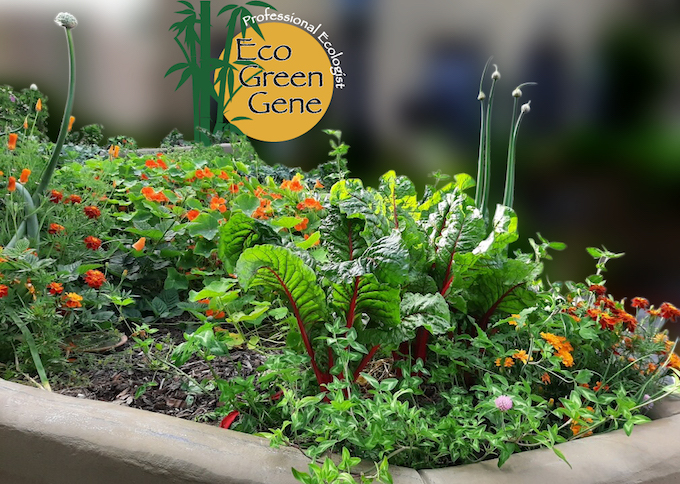
Ann Christoph, a landscape architect that served as one of the founders of the South Laguna Community Garden Park, says herbs like thyme, dwarf rosemary and oregano can be great for small-space gardening, though succulents, lavender, geraniums, santolina, dwarf germander and Cuphea hyssopifolia are also ideal for those with limitations. And vertical gardens may be utilized when space is low, as they have a small footprint while still offering plenty of room to grow a variety of different plants.
In sun-compromised areas, she suggests a shade garden with camellias, ferns, ruscus, star jasmine, bleeding heart vines and clivia, which are blooming right now. “These can all be grown in containers,” Christoph says. “Just be sure there is good drainage from the containers and consistent watering.”
And, when it comes to watering in general, Christoph notes that limits on space shouldn’t be an issue at all. “You can install an irrigation system with microsprays, or soaker tubing—or, sometimes, hand watering with a hose or water can works best.”
Luckily, season matters not in Southern California, where temperate weather ensures an evenness that can greatly benefit gardeners and their landscapes. “In our climate, you can start any time, but it’s best to avoid periods of intense heat, [such as during the] Santa Ana winds,” Christoph says. “If you start in the fall, you will be rewarded with spring flowers and fresh new leaves.”
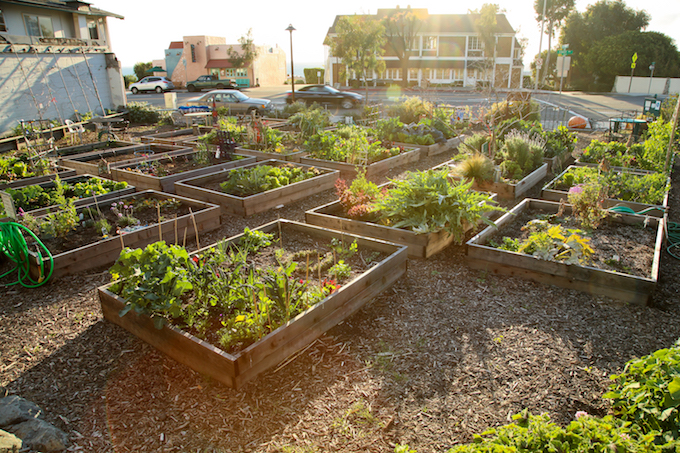
Part of the Community
Those in town who are working with limited space have another, more unique option to consider a well. The South Laguna Community Garden Park offers locals a chance to try their hand at keeping a garden, whether they have the space to at home or not. Plots can be reserved, meaning that whoever is in charge of that space can plant what they choose to. However, there are also communal garden plots as well as vertical, drought-tolerant and children’s gardens available to work on, ensuring that everyone who wants to gets a chance to partake in this growing hobby.
“The problem with small lots and small spaces is lack of sunlight,” Christoph explains. “This is why the community garden is so popular. Vegetables need sun for at least seven hours a day.”
The bounties of a plot at the community garden are plentiful, as she says you can gift fresh produce to friends and family. “When you grow plants for food your produce is different from what we might buy at the store. You have to be creative to harvest and use what is available in your plot at any given time.”
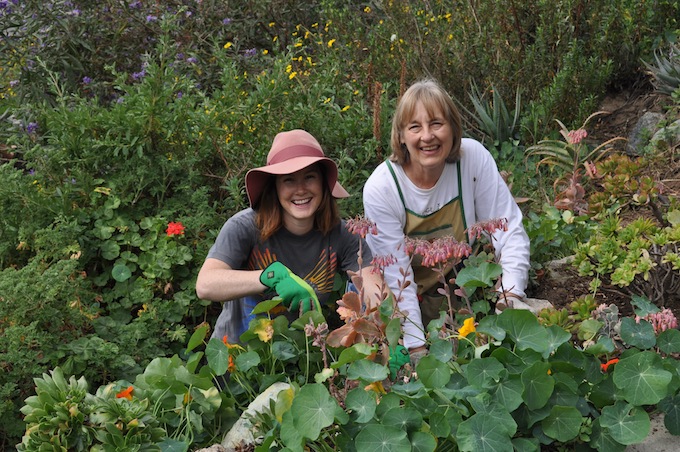
To avoid waste, she suggests creating new recipes with the ingredients you have at hand. For example, cooking chard with garlic and onions, then adding it as a pizza topping or as a layer in lasagna. If you have an overabundance of something, especially, finding new uses for it can expand your palate as well as your culinary knowledge.
While gardening in small spaces, whether at the community garden, on a patio or in a yard, Christoph says that she loves seeing the beauty that the plants produce all on their own. “We plant seeds, bulbs and starts, and they look like nothing. Then, the plants take over in wonderful, unpredictable ways.”
But the benefits of small-space gardening don’t end there, as she says that creating your own garden, customized with exactly the plants you want, offers “a feeling of confidence and accomplishment, and the peaceful[ness] … that comes from making your home and the community environment more beautiful.”


